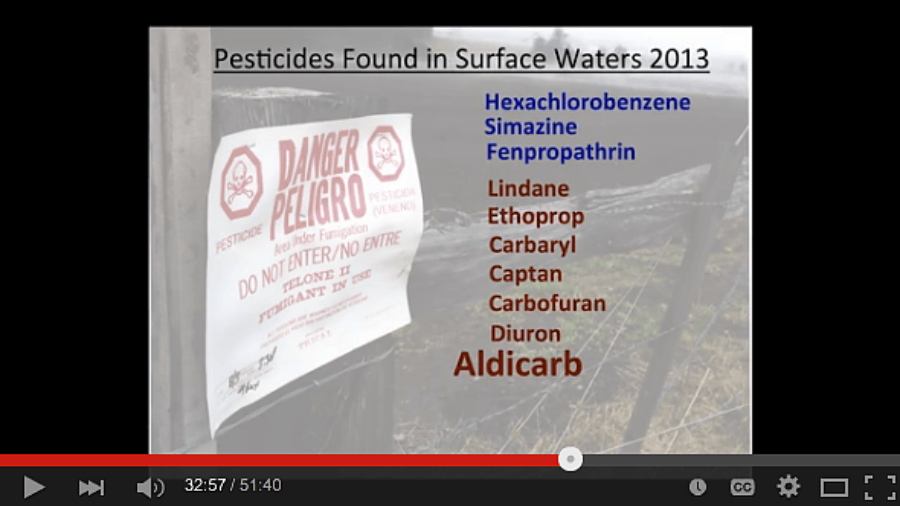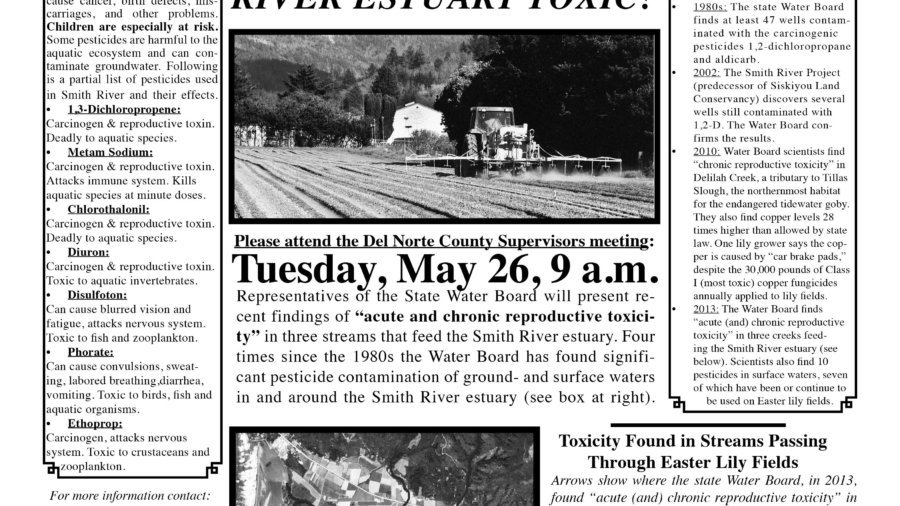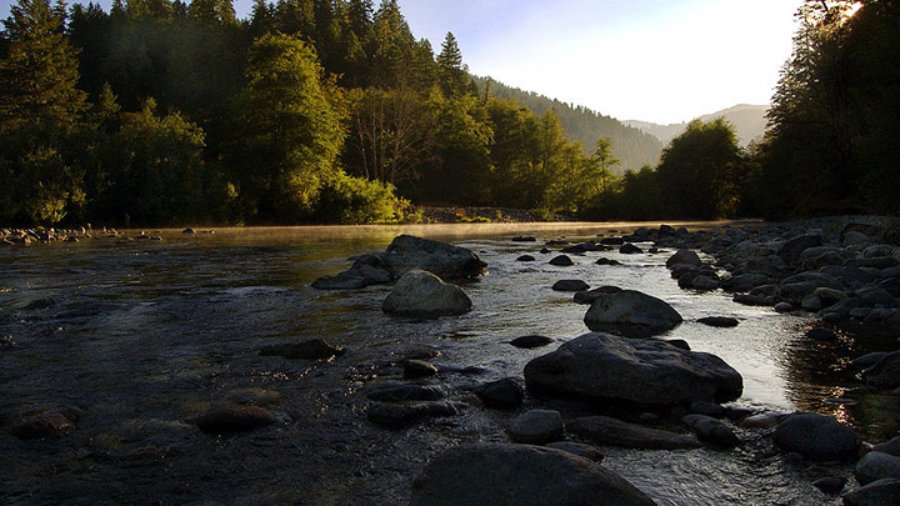Our presentation on pesticide use at the Smith River estuary is now up on YouTube.Read More
Uncategorized
CORRECTION: The meeting begins at 10, not 9. Please attend the Del Norte County Board of Supervisors meeting next Tuesday, May 26 at 10 a.m. to hear a presentation by the state Water Board on toxicity at the estuary, and you add your voice for a clean and healthy Smith River, from headwaters to the Read more
Click here for the expanded story Read more
We’ve been overwhelmed by the concern and support shown for the Smith River estuary, coming from all parts of the West. Combined with a great turnout (more than 100 people) for our presentation at HSU April 2, I’d say we have a constituency for change. Thanks to all. Soon we will link to a professional Read more
Hope you can make it! 6:30 April 2, Kate Buchanan Room, Humboldt State University Read more
Often a non-profit organization will put out a fundraising plea asking supporters to “match” a certain major contribution. It’s usually wishful thinking. After Siskiyou Land Conservancy received a $25,000 grant from the San Francisco-based Lisa and Douglas Goldman Fund, late last year, for our work to reduce pesticide use at the Smith River estuary, we Read more
State and federal regulators charged with protecting public trust values — such as clean air and water, healthy wildlife, and human health — are apparently uninterested in enforcing laws that should protect the estuary. It was in spring of 2014 that Siskiyou Land Conservancy obtained the clearest evidence that pesticides are indeed poisoning one of Read more
April 4, 2013 SLC recently completed Phase II of a restoration project that improves forest health and reduces the danger of catastrophic fire on the largest privately owned flat along the South Fork Smith River in Del Norte County, CA. In January, crews from Ashland, Oregon-based Lomakatsi Restoration Forestry thinned 15 acres of conifers on Read more
Many thanks to the Humboldt State University Natural Resources Club for spending the weekend of Sep. 15-16 on the South Fork Smith River property managed by Siskiyou Land Conservancy. Club members (all 18 of them!) cleared nearly a mile of trail along old skid roads to allow restoration crews access to hillside thinning units, and Read more
If you are in the Bay Area on June 30, come on by. TICKETS $15, available at: http://www.brownpapertickets.com/event/252681





